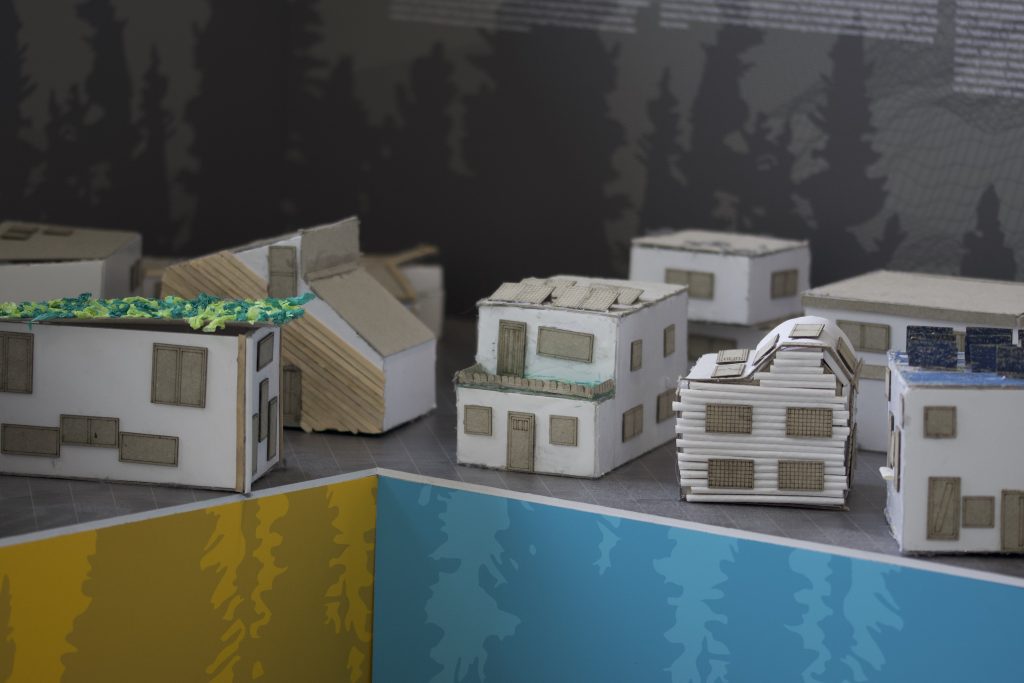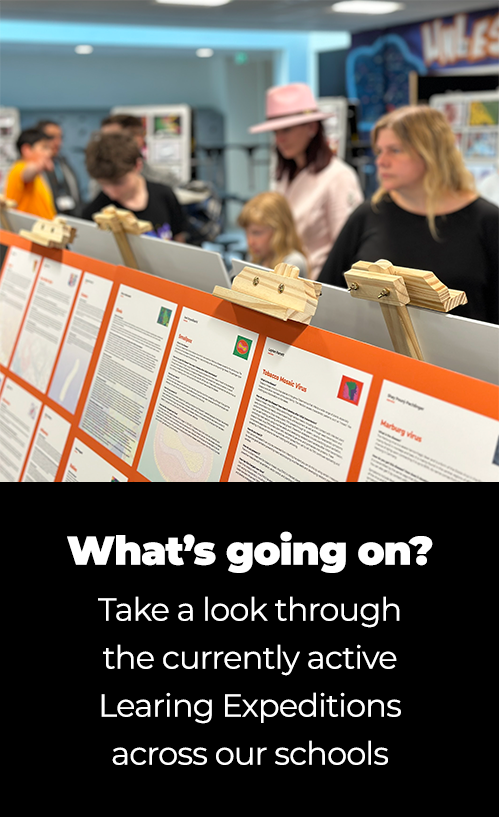GQ: To what extent has innovation advanced our society?
Expedition lead: Jenny Townson
Curriculum: HUMAN/STEAM
Phase/Year group: Year 9
Delivery date: Summer 2021
Immersion
In HUMAN, we considered a range of mystery pieces focusing on child labour in the past and present and the growth of global wealth and health. Students also took part in a gallery walk considering images associated with the Industrial Revolution, before completing a BBK about Charles Dickens. Finally, we developed our knowledge of development indicators and how countries developed over time using the Demographic Transition Model which was based on Britain’s development and industrialisation.
In STEAM, students carried out a series of experiments to identify themes for this expedition, including spring extension experiments, a basic forces circus activity, crystallization experiments and some simple chemical changes. We also read extracts from our anchor text, Richard Feynman’s Six Easy Pieces, which described chemistry and physics in the context of one another. We explored some profiles of modern-day scientific careers, including doing a class Live Chat online with real scientists.
Our immersion in maths began by looking at the history of social housing in Britain: from its inception at the end of World War I, to the contentious help to buy scheme, right up to contemporary social housing policy, where the Utopian ideals of Park Hill’s ‘Streets in the Sky’ have been lost. We watched George Clarke’s Council House Scandal to learn more about these issues and events.
In Art, pupils took part in an art workshop by the artist Ian Murphy where he explained his methods of working. Pupils experimented with a range of media under his guidance to produce a range of study sheets.
HUMAN Case Study 1: Green and Pleasant Lands
In Case Study one, we looked at life in Britain before the Industrial Revolution. We explored how different life was in the 1750s, with cottage industries, farming and rural living being the most common way of life. We analysed how employment sectors changed from primary to secondary with the growth of urbanisation and industrialisation and zoomed in on stages 1 and 2 of the DTM which formed the first geography assessment. We also began to delve into our anchor text ‘Oliver Twist’. We considered the blurb, making predictions as to what the novel might be about. We also discussed the 19th century language Charles Dickens had used when writing his book. We were introduced to the main character and about his early life in the Victorian workhouse and why he asked for more! We then read about Oliver’s migration to London and were introduced to key characters such as Fagin and his gang (The Artful Dodger).
HUMAN Case Study 2: Dark Satanic Mills
This case study explored the growth of industrialisation due to the exploitation of the British Empire and we considered England’s transformational change as a result of the Industrial Revolution. As part of this study we analysed the causes of this drastic change and the impact it had on the people and environment. Our focus here was living and working conditions and these were linked to Oliver Twist. As our study of Oliver Twist progressed, we analysed the characters of Bill Sykes and Nancy, alongside considering the moral dilemma ‘Is it ever acceptable to steal?’ We were shocked by Nancy’s fate and discussed whether she was either a criminal or victim of her circumstances.
HUMAN Case Study 3: Workshop of the World
For our final case study we moved into the present day and eastwards to China. We explained the causes of deindustrialisation in the UK and why China became the workshop of the world. We linked China’s growth and development to the DTM and analysed where it would fit into the model and if it has followed the same trajectory as Britain. Finally, due to globalisation and the growth of TNCs we explored the social, economic and environmental impacts of industrialisation, evaluating them for our final geography assessment. As we approached the final chapters of ‘Oliver Twist’ we discovered the fate of Bill Sykes and Oliver himself and then considered the question: Good or Bad? Are you inherently good or born bad? This formed the basis of a class debate which helped prepare us for our final product.
Science Case Study 1: Building a picture from the past
Students began this case study by comparing historical sources of information, critiquing the scientific conclusions that were drawn and beginning to build their own picture of how the elements could be arranged. A discovery timeline was built by the students to help them appreciate how scientific theories can change over time and this informed a lot of the narrated clips for our product, which was a film about innovation in Science. Practical experiments were used to demonstrate phenomena or model the scientific enquiry process wherever possible. Links with Maths and Computing were made when students learnt to programme a spreadsheet with lookup tables (arrays), which allowed them to identify elements from the periodic table from just the number of protons that they include. An expert in the field of particle Physics/Chemistry visited/fieldwork to speak to our students about the cutting-edge work they do, as well as their career path and progression.
Science Case Study 2: Differences Drive Change
This case study began with a practical investigation into cooling curves, making scientific enquiry skills a focus. Students worked on their retrieval of knowledge and understanding from KS3 around state changes and density. Density experiments allowed students to grapple with the Required Practical process for the first time, as well as explore the idea of the scientific method further. Throughout we used extracts from chapters 1-3 of our anchor text to deepen understanding. We calculated specific heat capacity and specific latent heat, and used Computing skills to create a calculator which could be used in practical lessons to check the accuracy of our experimental results against our theoretical results.
Science Case Study 3: Newton Knew
Our final case study focussed on the historical discoveries and theories which led to our current understanding of Newtonian forces. This allowed for a great deal of practical work and our next Required Practical, which explored Hooke’s Law. Students developed their spreadsheet skills by constructing a Hooke’s law calculator and using it to model the behaviour of springs. They then tested this in the lab, comparing their own readings to the calculated readings and evaluating any errors.
Maths
In this expedition we studied 2D and 3D geometry, including scale diagrams, area and perimeter, and Pythagoras’s Theorem. This expedition encouraged us to engage with how design and architecture utilises patterns and shape to produce something beautiful, inclusive, and progressive. Through our mathematical and artistic studies, we better appreciated how the two disciplines are both motivated by a pursuit of beauty. Using this intersection as a springboard, we redesigned social housing based on the architectural principles explored in immersion, utilising our mathematical and artistic studies to do this. By doing this we were better able to understand how Britain’s social housing policy has been an innovation that has advanced society, exploring how we can return to some of the core principles that have been lost in recent years.
Case Study One: Streets in the Sky
During Case Study One, we learnt how scale drawings are an integral part of creating architectural plans. We started by looking at scale factors and enlargements and then applying these to 2D and 3D representations of buildings and floor plans. By utilising our study of area and perimeter, we were able to better understand how architects have certain parameters and briefs that they have to work within, and the challenges that they face when having to consider these constraints. Our study of geometric constructions extended our understanding of an architect’s role as we were given the opportunity to begin creating drawings for our own social housing concepts. These began on the small scale with very quick and small designs, until they became something more grand.
Case Study Two: Model Car, Model Wife, Model Village
Using the design principles and skills gained from Case Study One, we were able to produce something concrete in Case Study Two. Our focus was on designing social housing that was a place where people could thrive and not just survive. We used ideas that we gained from immersion to produce initial designs before turning them into plans and elevations. First, we had to develop our social housing concept into a scale diagram using engineering drawing skills. This helped us to better conceptualise our designs. Using these initial designs, we followed the same principles and processes that an architect would, and we turned our 2D designs into 3D models. We used card craft and foam board to create a neat, to scale 3D model of our social housing concept. Working as a group, we then created a 3D landscape using our social housing concept models, producing a unified image of our social housing concept. During this process we had architecture experts from the University of Sheffield critique our work, which helped us to carefully craft second and third drafts of our designs.
Art
After the Ian Murphy workshop, pupils produced a contextual study of Ian Murphy’s artwork where they created a distressed surface for their background using tissue paper, newspaper, sugar paper, PVA glue and sand paper. They then used black fine liner to draw their design, using the same mark making techniques that they were shown during their artist workshop experience. Pupils then went on to produce a detailed artist research page about Ian Murphy where they added multiple studies to show their own drawing skills in the style of the artist.
Pupils carried out a gallery walk where they recorded their notices and wonders of multiple properties. Pupils were encouraged to look at the design features of each building as well as the materials, size, layout etc.
Pupils then discussed what social housing is, why it is important and what they feel good social housing should be like. This topic was also discussed in the pupils STEAM sessions to reinforce its importance within the expedition.
Pupils were then asked to create a mood board of inspirational images to communicate their ideas. Pupils were encouraged to include images of examples of architectural features to help them with the next step in the social house design process.
The next step was to begin to sketch their initial house design ideas (concept drawings) using their gallery walk and mood board as a starting point. Pupils were taught about the principles of architecture to ensure that they were creating a successful design.
As pupils were taught about scale in their STEAM sessions, they were then able to create a floorplan of their social housing design which was drawn at a scale of 1cm = 1m.
Pupils brought these floorplans to their art session to help them ‘scale up’ to create paper templates for their final 3D model. These paper templates were used to help pupils cut out their materials accurately.

Pupils then used craft knives, steel rules and hot glue guns to carefully construct their model houses using paper covered foam board and grey board. They then added the features such as doors, windows, solar panels etc.
Final Product
The Final Product was a collaboration between Art and Maths, where each student designed a house for a model village using the principles of social housing; this linked directly with the Victorian slum studies in HUMAN, as well as the ratio and scale work in Maths. In HUMAN and Science we addressed the Guiding Question through short narrated video clips which were turned into a short film. The expedition culminated in a Presentation of Learning whereby we showcased our work at an architectural exhibition in Doncaster. We presented our models of high-concept progressive social housing to an authentic audience. During the exhibition we discussed our designs and models with the audience, how we utilised the principles and art and maths, and how we felt our designs were innovative in terms of Britain’s contemporary social housing policy.
Learning Targets:
History
I can explain how and why working conditions have changed over time and how this impacted on government response and attitudes to human rights. (History/Citizenship)
I can analyse what a source tells us about 19th Century working conditions.
English
I can analyse how writers use language and structure to present and develop a character and setting.
I can apply knowledge of vocabulary, grammar, punctuation and text structure to a formal letter with a specific purpose and audience.
Geography
I can explain the link between the Demographic Transition Model, population pyramids and development
I can evaluate the social, economic, and environmental impact of China’s industrialisation . (Geography/Citizenship)
Maths
I can calculate areas and perimeters from scaled architectural drawings
I can use scale factors to calculate accurate enlargements of scaled drawings
I can use my knowledge of geometric constructions to develop engineering drawings and social housing designs.
Science
I can explain how historical scientific models and theories contributed to our current understanding of the atomic model and periodic table
I can explain how differences in the energy, arrangement and motion of particles can result in reversible phase changes
I can explain the key concepts of ‘action at a distance’ and proportionality in our understanding of forces
Computing
I can design spreadsheets to calculate theoretical data which can be used to check the accuracy of my experimental data.
Art
I can identify the key features of a successful artist research page and produce my own.
I can use 3D construction techniques to create a model house



